Buying a Sewing Machine
Sewing Machines can be split into 3 basic categories: Entry level (under £200), mid-range (£200-£500), and top range (£500 +). They are definately not all the same. As with anything else, you get what you pay for. Let’s start by explaining the features of sewing machines so you know what you need to look for:
Brand
You’re probably familiar with makes such as Singer, Brother or Janome as they produce a large range of machines in the lower price brackets (£50-£150) which are predominately aimed at beginners and hobbyists. They are widely stocked by department stores and hobby chains. These manufacturers also make more expensive machines but these are not generally stocked by high street retailers. However, if you go to a specialised sewing machine dealer, they will stock machines from other manufacturers that you may not be familiar with including Bernina, Pfaff, Elna, Juki and Husqvarna. These manufacturers don’t make many machines in the lower price bracket as they aim at the serious sewists and professionals.
Electronic v computerised ?
Electronic machines are controlled via electronic pulses from the motor which control stitch selection, length and width. Selection of these is by means of dials. Computerised machines have digital displays and selection of the stitch type, length and width is by means of push button or touch screen.
Sewing machines in the lower price band are all electronic, and with just 2 or 3 dials they tend to be easier to learn to use. They will also withstand more abuse that a learner can subject them to, and are cheaper to have serviced. However, there are some computerised models for around £250 (Janome CXL301) which are great entry level machines. They will also give longevity if you’re already smitten. Some controls on an electronic machine may be on a slider giving a larger variety of options. Examples of this are stitch width, needle position and stitch length. Computerised controls can sometimes offer more incremental options (although usually only at the higher price points) but can also be limiting in that they can only be set to specific numbers or measurements. For example, 2.0mm, 2.5mm, 3.0mm, 3.5mm in 5mm increments.
Free Arm
This means that the extension bed/accessories case is removable to leave a small ‘arm’ over which you can slip sleeves or other small items. This is useful for taking up cuff or trouser hems, but almost all modern domestic sewing machines have this feature.
Front or top loading bobbin
A top loading (drop-in) bobbin is almost the norm these days as they are easier to load. They usually have a clear plastic cover too so you can usually see how much thread is left on the bobbin. The thread feeds by rotary motion (full-circle) and is less prone to jamming. This is an obvious advantage for a beginner. If you’re a fan of free-motion embroidery however, you may prefer the front loading style which has a removable bobbin case allowing for bobbin tension to be adjusted more easily for embroidery effects.
Range of stitch types
Don’t be taken in by a machine with a large range of stitches if you’re only wanting to do some basic dressmaking and alterations. You’re only going to need straight stitch, zig-zag and buttonhole. My own machine has over 220 stitches, most of which are very pretty and a lot of fun but I only tend to use straight stitch and the overlocking functions regularly and I sew every day. Unless you’re wanting to do decorative embroidery, you don’t need a large range of stitches. What is more important is that you can vary the length and width of the stitches. You’ll need the machine to sew a stitch length of at least 4mm for basting and a width of at least 5mm is good for zig-zag/edge-finishing. Machines in the bottom price bracket often don’t have much scope for altering the length and width of stitch. You’ll get 3 or 4 pre-set options. Also make sure that you have a variety of needle positions (the needle can be moved to the left and right). This is useful for inserting zips and topstitching but again, isn’t a feature offered by machines in the very low price ranges.
Automatic Needle Threader
This was a feature patented by Pfaff over 30 years ago and as the patent has now expired, everybody’s using it. It’s even available on many machines in the entry level bracket so do look for it. It comprises a pull-down lever with a tiny hook that swings round and pulls the thread through the eye of the needle. This saves many frustrating minutes of thread-licking and eyestrain.
Automatic buttonhole
If you’re intending to make clothes, then you’ll need to be able to sew buttonholes. The good news is that most modern machines, even those at the lowest price point, have this function. It’s likely to be a semi-automatic 4 step buttonhole, meaning you have to change the settings yourself through each step by turning the dial. The more you pay, the more likely you are to get a fully automatic buttonhole setting, which produces the correct length of buttonhole by placing a button in the slider part of the special presser foot. Higher spec machines will have more than one style of buttonhole for different fabric and garment types. In the mid-range, you may get four or more fully automatic buttonhole types.
Speed controller
Most learners will be nervous about the machine racing away from them and sewing too fast so you might consider this to be an advantage. It can sometimes be useful to limit the speed when you’re sewing something very intricate. However, as in driving a car, it is pressure on the foot pedal that controls the speed; the harder you press, the faster the machine will go. Good foot control must be learned and there is a danger that you perhaps will be spoiled by the speed controller and not fully learn good foot control. This feature may not be available at the lower price brackets and shouldn’t be a deal breaker.
Needle up/Needle down
This will come in the form of a button that when pressed, will set the machine to stop either with the needle always up, or always down in the fabric. This is useful when sewing corners as you can pivot the fabric around the needle without the fabric slipping. If you don’t have this function, you’ll have to move the needle manually using the hand-wheel so again it’s nice to have but not essential. It won’t be available in lower-priced machines.
Lockstitch/Backstitch
This simply means that the machine can sew backwards. You’ll need to do this for a few stitches at the beginning and end of every seam to ‘lock’ the stitches and prevent them unravelling. Every machine I’ve seen, even those at the lowest prices have this.
Presser Foot
This is the part that holds the fabric against the feed dogs in the needle bed, and is lifted and lowered by a lever. Specialised presser feet are available for various sewing tasks (zipper foot, buttonhole, embroidery/darning (see my earlier blog on the subject of presser feet). The more you pay for your machine, the more presser feet will be included as standard but look to get at least a zip foot and buttonhole foot. Others will be available for a small additional cost. Presser feet are usually clip on/clip off and are quite easy and quick to change. It may be worth buying the model up from the machine you’re looking at if it comes with additional presser feet that you may want.
Adjustable Presser Foot Pressure
The presser foot is the part which is lowered before sewing to hold the fabric against the feed and enable it to pass through the machine. When sewing bulky fabrics or lots of layers, too much pressure can push the top layer out of place, whilst too little pressure on very fine fabrics means the fabric won’t pass through properly so the ability to change the pressure is useful. This will not be available in low-price machines but if you’re planning on sewing only medium weight fabrics, this won’t be an issue.
Twin Needle
This is two needles which are joined to a single shaft and sews two rows of stitches at the same time. It is used widely in heirloom sewing and is also useful to give jersey knits an authentic-looking hem. The facility to sew using a twin needle may not be found on the lower-priced machines.
Drop feed
The feed dogs are the zig-zag shaped parts that protrude through the needle plate, and which grip the fabric and pull it through under the needle. These can be lowered to enable the user to control the direction of the fabric and is required when darning or more exciting, free-motion embroidery.
Machines at the very low ranges won’t have this facility but instead, may have a ‘darning plate’. This is a flat piece of plastic or metal which covers the feed dogs and prevents them gripping the fabric. If you don’t have a darning plate, then you can use a piece of card. It should be used in conjunction with a darning or free-motion embroidery foot, which is not available with entry level machines. You may be to buy as an optional extra. However, if you want to use your machine to do free-motion embroidery, then you’ll need a machine with a robust motor capable of running at high speeds for long durations of time. I’d recommend spending a minimum of £250. Pfaff, Bernina and Husqvarna are all well-respected for this purpose although they don’t have many models around this price range. The Husqvarna Emerald 116 can be found for this budget with the Emerald 118 coming in at around £300. This is the model I have in the studio and they have proved themselves worthy. They are robust enough to cope with the sometimes harsh treatment they receive from Beginners. Many schools and colleges use these machines where even there, they’ll have a lifespan of well over 25 years.
Other considerations
Budget
Machines in the lower price bracket will perform basic sewing functions with some or all of the features described above. If they’re described as ‘lightweight’ then this will be an advantage if you want to take it to classes. However the compromise comes in the guise of plastic parts which are not hard wearing. Lightweight machines will not have an internal metal frame and will bounce around while sewing. The vibration doesn’t produce even stitching. Few machines these days have a metal outer case, but look for a machine with an internal metal frame and all metal internal parts, even if the outer case is plastic. Some degree of solidity and weight is required for good stitching. The quality of a machine is determined by the motor and stitch quality, not in the amount of features and stitches. A poor quality machine will feel ‘clunky’ and have a grating sound which does not make for pleasurable sewing. And if the machine jams or breaks often, then you’re going to get frustrated and be put off sewing for good.
Consider what you want to use the machine for. Budget machines don’t have the power to cope with multiple fabric layers or thick fabrics like furnishing and denim. They’ll also be much slower too. So if you want to make curtains, then you’ll need to invest a bit more in the machine. Generally, if you spent £100 on a machine, it might last you 3-5 years. That’s if you don’t get frustrated by its limitations before then. If you spend £300, that machine will last you 30 years.
Buying a Sewing Machine Second Hand
If you’re on a strict budget, then decide what you need as an absolute minimum and stick to it. For a beginner who’s not even sure if you’re going to like sewing, consider buying second hand. If you’re budget is under £100, then you’re definitely better buying a 2nd hand machine rather than buying new(unless you can borrow one for a few months). That way you can learn and build up your skills and you’ll have a better idea of the direction of your future sewing projects, whether dressmaking, upholstery, or creative embroidery. You can treat yourself to a new machine later that’s more specialised for your needs.
However, be careful if buying second hand from an online auction site or newspaper ad. You don’t know the machine’s history or how it’s been cared for and stored. You only have 7 days to take any action and you may not have time to check that all features of the machine are working properly in that time. I’ve had lots of people come to my studio for their first lesson with a machine that they’ve acquired second hand. Quite often the machine hasn’t been used for years (or decades). Without knowledge of its history or service record, it can often be an expensive mistake. The machine will work for 20 minutes or so, but then it will cease up completely and are often irreparable.
Visit an authorised dealer.
Better to visit a specialist sewing machine dealer who will have a few reconditioned trade-ins that he will service and supply with a warranty. Even if it’s already given its previous owner 20+ years of faithful service, a quality machine that would normally be outwith your price bracket if bought new, will likely last you for decades. He’ll also have some demonstration models that are new machines but which have been used in the shop for would-be buyers to try. These machines represent excellent value as they may only be a few weeks or months old and will perhaps come at a discount of 20-40%. This is another reason why it’s probably better to buy from a specialist shop; he’ll be able to recommend a range of machines that fit your requirements and you can try them out in the shop before you buy. Check that he’s in the Sewing Machine Trade Association.
I’ve used Pembertons Sewing Machine Centre for over 25 years and heartily recommend them. They will listen to your requirements and recommend the best machine machine within your budget. They have a whole room full of machines set up ready for you to try. I advise that you don’t buy a machine that you haven’t tried first.
How often will you use it?
If you are just starting to sew and aren’t quite sure yet if you’ll continue, then if you can’t borrow one for a while or buy second-hand, then there’s no point splurging a lot of money. A £100 machine will get you started and give you most of the features described, and you can upgrade as your sewing aspirations develop. Try the Janome 2015a or Pfaff 1050 Element at £99. The Singer Tradition 2282 (usually around £150 on Amazon) is often available from Lidl for £79.99. For this price, it’s a great starter machine and will perform most functions reasonably well.
If you’ve already been bitten by the sewing bug and want to build on your skills by producing more advanced garments, then look in the mid-price range and consider spending at least £250-£300. At this price point, there are lots of good quality machines that have all the features you’ll need and will last for decades (if you take care of it) Try the Janome 525S, which is the model used in the ‘Great British Sewing Bee, and won a Which Best Buy Award. It comes with a good range of stitches and impressive selection of accessories, and is probably all that most home sewers will need. There’s also the Janome CXL301 which is a computerised machine but is quite easy for a beginner to learn. Also look at Pfaff who have the Hobby range for £225-£269 or the Husqvarna Emerald range at £249-£329 which are used in many schools. Generally, a machine will do more the more you pay, but at the crossover points, there will be some machines that are ‘pimped’ with a couple of extra fancy stitches to try to take them into the next category but really don’t have the quality deserving of the class.
If you enjoy using your sewing machine then you’re likely to sew more often. If your machine gets jammed and breaks often, or chews up the fabric, doesn’t keep accurate tension etc, you’ll just get frustrated and won’t want to sew. A really good sewing machine should be viewed as a long-term investment. Consider the cost spread over the number of sewing hours you anticipate to gain from it and then you’ll be able to work out the real value of the machine.
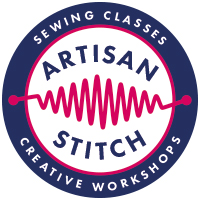
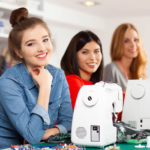
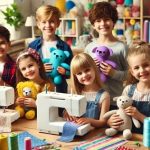

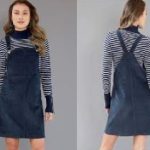
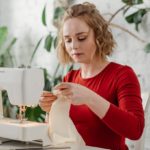
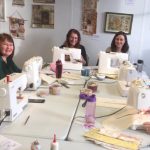
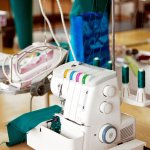

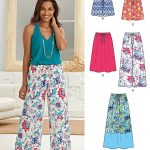
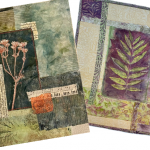
One reply on “What Sewing Machine should I buy?”
[…] Which sewing machine should I buy? […]